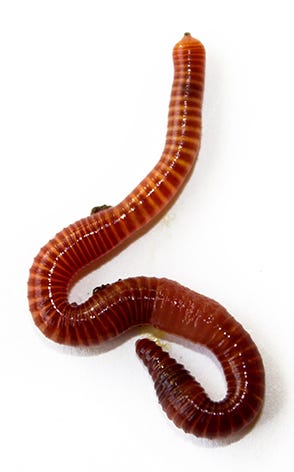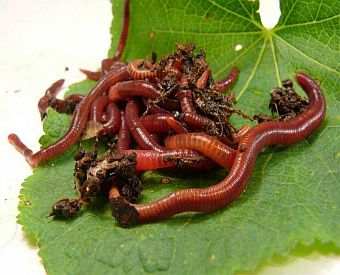Proven composting red wigglers: Start vermiculture today
Proven composting red wigglers: Start vermiculture today
Blog Article
Everything You Required to Know About Red Wigglers for Composting
Red wigglers, or Eisenia fetida, play an essential duty in the world of composting, transforming natural waste into useful dirt changes. The procedure of establishing up a worm container and preserving it can present obstacles.
What Are Red Wigglers?

(redworms for composting)
Native to North America, red wigglers are surface-dwelling organisms that favor moist, cozy habitats abundant in breaking down raw material. Their diet plan is composed primarily of rotting plant material, food scraps, and other natural particles, which they consume and break down successfully. As they digest this material, they produce nutrient-rich castings that improve soil fertility.
Red wigglers are hermaphroditic, possessing both male and women reproductive organs, and can replicate quickly under ideal problems. Overall, red wigglers are essential factors to the process of reusing organic waste into beneficial compost.
Benefits of Making Use Of Red Wigglers
Utilizing red wigglers in composting systems provides countless advantages that enhance both the performance of waste monitoring and the top quality of the resulting compost. These worms, scientifically referred to as Eisenia fetida, are specifically reliable at damaging down organic matter, turning kitchen area scraps and yard waste right into nutrient-rich compost at a sped up price.
Among the key advantages of utilizing red wigglers is their capacity to take in large amounts of organic product, typically processing their weight in food waste daily. This high intake rate brings about faster decomposition and decreases the volume of waste sent out to landfills. In addition, the castings generated by red wigglers are rich in necessary nutrients, useful microbes, and enzymes, making them an exceptional plant food for gardens and plants.
Additionally, red wigglers thrive in a variety of settings, making them adaptable for both interior and exterior composting systems - red wigglers. Their presence in a compost bin helps to aerate the product, stopping odors and promoting a healthy and balanced composting process. On the whole, using red wigglers not only adds to effective waste monitoring however additionally supports sustainable horticulture methods via the production of high-quality garden compost
(red worms for composting)
Establishing Your Worm Bin
To successfully set up a worm bin, it is necessary to pick an appropriate container that satisfies the requirements of red wigglers while giving a conducive atmosphere for composting. An ideal container can be made from plastic, timber, or steel, with a capacity of a minimum of 1 square foot for every pound of worms.
Guarantee the container has adequate drain openings to stop excess moisture, as red wigglers prosper in a wet, yet not water logged, environment. red wigglers. The container must also be aerated to give enough air movement, protecting against anaerobic conditions that can hurt the worms
An ideal location for the worm bin is an awesome, dark area, without direct sunlight and extreme temperatures, as red wigglers favor a temperature array of 55 to 77 levels Fahrenheit.
Before introducing the worms, prepare bed linens materials such as shredded paper, cardboard, or coconut coir, which will certainly supply both environment and food. Moisten the click here now bed linen lightly to develop an inviting environment for the worms. Last but not least, take into consideration positioning a cover on the bin to maintain moisture and minimize parasites, while ensuring it can be quickly eliminated for upkeep.
Feeding and Treatment Guidelines
Feeding red wigglers is a critical aspect of preserving a healthy composting system. These worms grow on a varied diet, largely made up of organic materials such as vegetables and fruit scraps, coffee premises, and smashed eggshells. It is vital to prevent feeding them meat, dairy, and oily foods, as these can produce unpleasant odors and attract pests.
When introducing food to your worm bin, slice or shred products into smaller sized items to promote quicker decay. Start with percentages to evaluate the worms' consumption price, progressively increasing the amount as they adapt. It is advisable to alternate feeding places within the container to motivate complete mixing and oygenation of the compost.

Troubleshooting Common Issues
Keeping a flourishing worm composting system can often present challenges that need interest and troubleshooting. Typical problems consist of an unpleasant odor, which commonly suggests overfeeding or the existence of anaerobic conditions. To treat this, lower the amount of food added and guarantee proper oygenation by mixing the bed linen product.
An additional constant trouble is the getaway of worms from the container. This can happen because of too much dampness or improper environmental problems. Regularly inspect the moisture degrees, going for a wet yet not soaked consistency, and maintain optimum temperature levels between 60-80 ° F(15-27 ° C )to develop a comfy habitat for your red wigglers.
Pests, such as fruit flies, can additionally invade worm containers. red wigglers. To fight this, cover food scraps with a layer of bed linens or shredded paper to deter flies from laying eggs. Additionally, ensure that any kind of food added is fresh and without mold and mildew, which can attract unwanted parasites
Lastly, if your worms seem non-active, look for anxiety elements such as temperature level fluctuations or insufficient wetness. Resolving these usual issues will help keep a healthy and balanced and efficient worm composting system.
Final Thought
In summary, red wigglers, or Eisenia fetida, play a vital duty in sustainable waste monitoring via vermicomposting. Correct setup and maintenance of a worm container, along with adherence to feeding standards, make certain a flourishing environment that lessens garbage dump payments.
Report this page